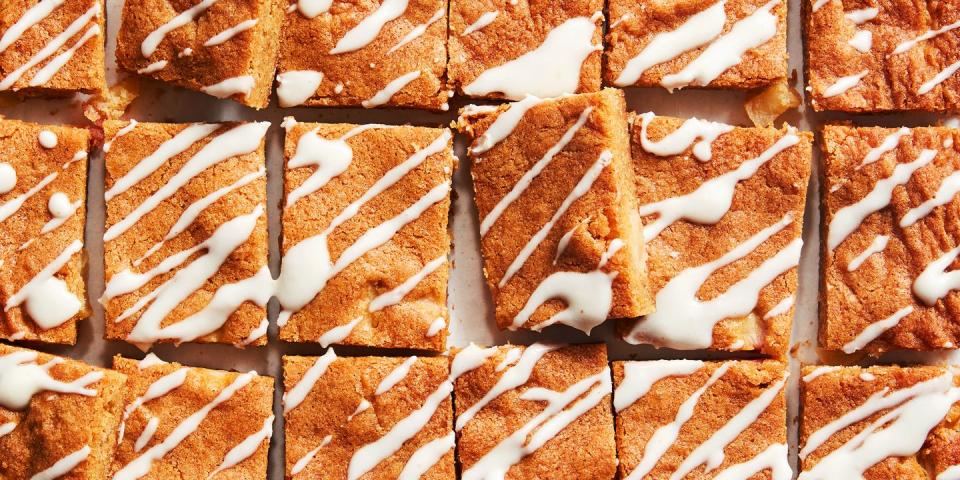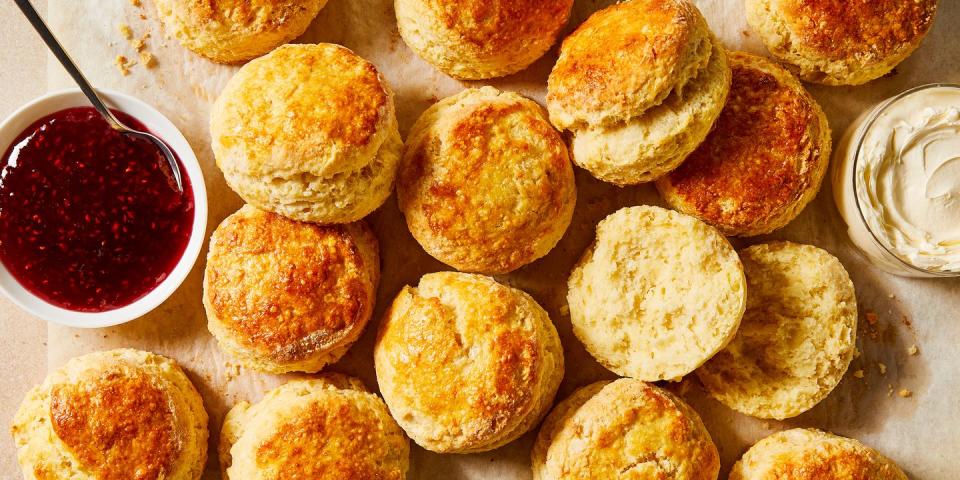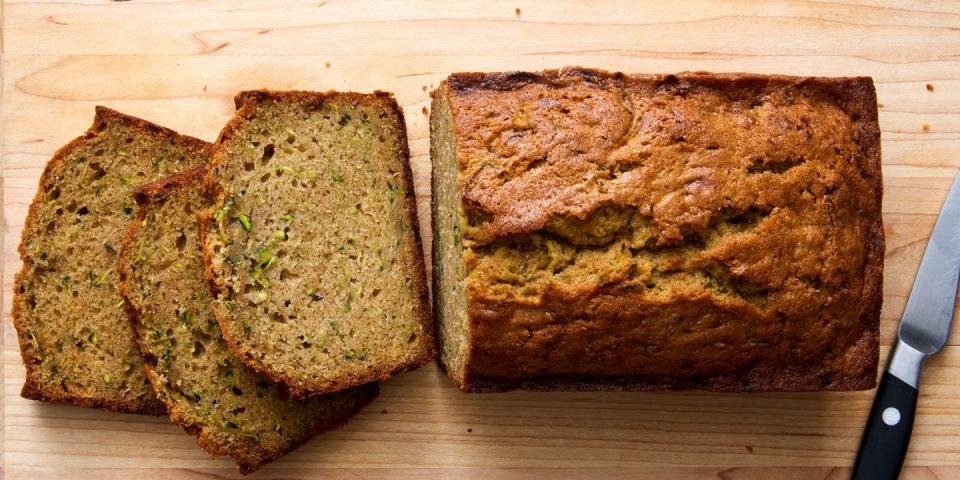What Happens If You Accidentally Swap Baking Soda & Baking Powder?
Whether you’re making cookies, cakes, breads, or brownies, you’d be hard pressed to find a baking recipe that doesn’t include a rising agent. The secret to soft and fluffy treats is the presence of a leavener, an ingredient that creates air bubbles in doughs and batters.
Some dishes use yeast as the primary leavener, but most of our favorite desserts call for baking soda or baking powder. These white, powdery ingredients are the fastest, most reliable rising agents you can keep in your pantry. Their names are so similar, and they both achieve the same goal. So they must be interchangeable, right? Wrong!
Baking soda and baking powder each have their own unique qualities that make them irreplaceable. We consulted our resident baking expert, Senior Food Editor Makinze Gore, to unpack the similarities and differences between baking soda and powder and when to use each ingredient.
When Should You Use Baking Soda?

Baking soda is simpler than baking powder. It only contains one ingredient: sodium bicarbonate. The naturally alkaline compound works by interacting with acidic substances. Do you remember the classic volcano experiment from elementary school science classes? The same principle works in baking.
Just like baking soda and vinegar simulate a volcanic eruption, baking soda interacts with acidic ingredients in doughs and batters to create bubbles of CO2. But instead of spilling out of a papier mâché mountain, the carbonation gets trapped within your baked goods to create light and fluffy air bubbles.
Common sources of acid in baking recipes include buttermilk, yogurt, lemon juice, and cocoa powder.
Baking soda isn’t just used as as a rising agent, either. It also improves the texture and appearance of your food. "Baking soda is also important in helping provide color to baked goods and also helps things spread," Gore says. "It’s why you’ll often see it in cookies. Even though there’s not a strong acidic ingredient in chocolate chip cookies, the soda helps turn it golden and lets the cookie spread so it isn’t a puck."
The same principle applies when baking soda is used to boil pretzels before baking. The pantry staple can also serve as a tenderizer for certain ingredients—like meat and even canned chickpeas. But in most applications, you won't see it used in large quantities. Gore says baking soda is approximately three times as strong as baking powder.
When Should You Use Baking Powder?

Baking powder was created for instances when you’re baking with low or no acid in the rest of your recipe. It’s made from two ingredients: baking soda and cream of tartar. The latter is derived from tartaric acid, which is created as a byproduct during the winemaking process.
The low pH of cream of tartar pairs with baking soda’s high pH to cause the same reaction that happens when you add any other acid to baking soda. The rising power isn't as intense as baking soda, but there are still benefits to using baking powder.
“Baking powder reacts twice: first when mixed with a liquid and again when heated. This double rise will make your baked goods fluffier and softer," Gore says.
Baking powder isn't limited to baking projects, either. "Baking powder is also great in breading, like for fried chicken or fish," Gore adds. "It gives you that really craggly and crunchy crust."
When Should You Use Both?

Both baking soda and baking powder are primarily used to help baked goods rise, but sometimes there are situations that benefit from using both.
Because baking soda neutralizes acid, supplementing the ingredient with baking powder is a great choice in recipes where you still want to taste some tanginess—think buttermilk pancakes and lemon blueberry bread.
Other recipes with relatively low acid levels may need baking powder to puff up, but also include baking soda to boost the browning. A dash of baking soda increases the Maillard reaction (a.k.a. the chemical process that creates a golden exterior) in recipes like zucchini bread and sugar cookies.
Regardless of whether your baked goods call for baking soda, baking powder, or both, we strongly recommend using exactly what's in the ingredients list. Baking is truly a science, and substituting seemingly similar ingredients may lead to disastrous results. So when in doubt, follow the recipe.
You Might Also Like


